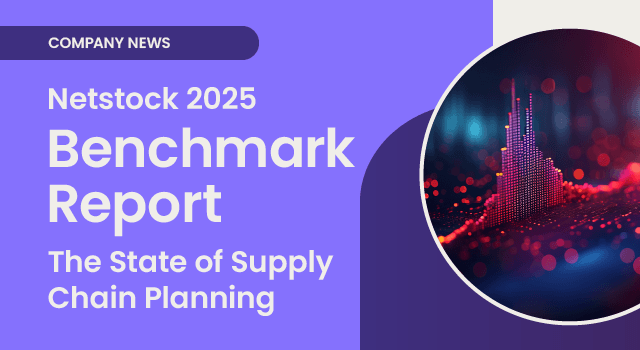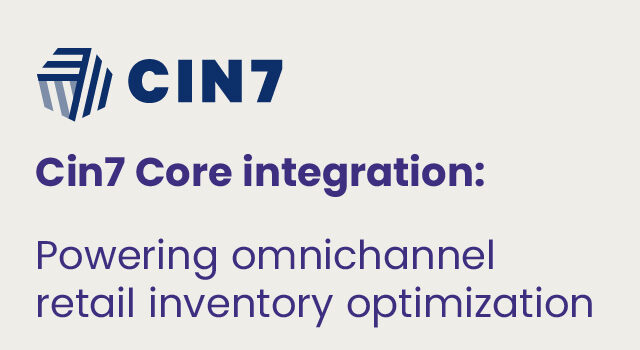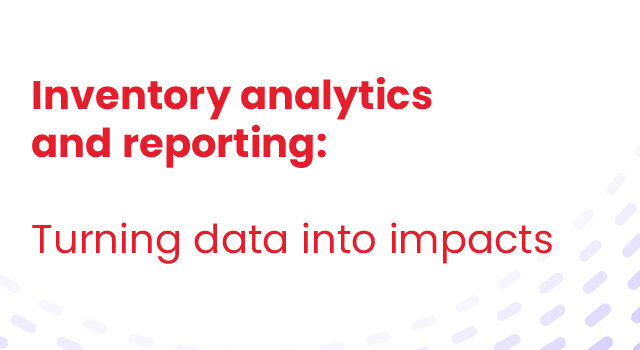Your Bill of Material (BOM) is the blueprint for production and should drive all procurement activities. Integrated with a demand forecast, accurate BOM management can help you optimize your inventories. Yet, BOM management is challenging, and without streamlined BOMs, you risk material shortages and production delays. You can’t run an efficient manufacturing operation without the support of accurate BOMs.
Still, you can use strategies and technologies to improve BOM management for efficient, cost-effective production.
Understanding the Bill of Materials (BOM)
The Bill of Materials (BOM) itemizes the parts, components, and raw materials used to make a product. It describes the material and component quantities and how they fit together.
Here are a few BOM types you should know:
- Single-Level BOM: Lists the components and materials used to assemble a product in a simple, hierarchical format. Single-level BOMs describe simple products with few parts and sub-assemblies.
- Multi-Level BOM: A more complex BOM containing top-level products and lower sub-assemblies. The sub-assembles may have their own BOMs., a nested structure containing materials and assemblies. A multi-level BOM is more complex, with several component levels.
A BOM is the sum of its parts. The parts include:
- Raw materials: The basic elements, like fabrics, metals, or plastic feedstocks used to manufacture the product.
- Sub-assemblies: Products or components made from raw materials and/or components. Subassemblies come together to form the final product.
- Consumables: Items needed for the production process. They don’t form part of the final product and may include lubricants, cleaning materials, gases, and adhesives.
- Quantities: The amount of each material or component needed for one production unit.
- Part numbers and descriptions: Each item has a unique part number and detailed description for procurement and tracking.
- Units of measurement: The method by which material and components are measured. Examples include pieces, meters, kilograms, etc.
The BOM guides departments from procurement to production. It ensures that every department supports the production schedule.
Let’s see how the BOM drives the various departments:
Procurement
The BOM defines the materials and components needed. This drives replenishment, ensuring that orders contain the correct items, in the right quantities. The procurement team uses projected component usage for cost and lead time negotiation.
Assembly
The BOM shows the assembly sequence and the components in each assembly. It’s a step-by-step production guide that ensures the inclusion of all sub-assemblies and parts in the finished product.
Inventory management
A well-organized BOM allows material flow tracking into and out of inventory. It ensures material availability while avoiding stockouts and excess stock. The BOM feeds into the Material Requirements Plan to calculate replenishment orders.
Quality control
The BOM is crucial for product quality maintenance. It should stipulate the correct components in the right quantities. The BOM provides a traceable record of all materials. It helps quality assurance, auditing, and compliance with standards.
Cost control
The BOM enables accurate cost estimations. Use it to track changes that could affect production costs.
Challenges in managing BOM
Businesses face several challenges in BOM management, especially with complex BOMs. Here are some of the issues you may face:
Multi-Level BOM complexity
Multi-level BOMs, with several sub-assemblies and components, create several challenges, including:
- Interdependencies: Multi-level BOMs have several dependencies. Each sub-assembly has components. A change in one sub-assembly can cascade, affecting the production process.
- Change management: It is difficult to keep track of updates and revisions on each level, especially when there are frequent changes.
- Coordination across teams: Multi-level BOMs need close collaboration. Miscommunication or gaps in data transfer between teams can cause errors or rework.
- Data overload: As the number of parts, materials, and sub-assemblies increases, the data volume becomes more complex. Tracking every part is more difficult, leading to inventory and production planning problems.
Data accuracy and version control
Accurate data and strict version control are critical BOM management issues. These areas can present challenges, including:
- Data accuracy: Inaccurate or outdated BOMs can cause significant production issues. These include ordering the wrong materials and missing critical components. Even a small error in part numbers, quantities, or descriptions can cause costly delays and rework.
- Version control: BOMs evolve with product redesigns and improvements. Managing these changes and ensuring everyone works from the BOM latest version is crucial. Without well-managed version control, the production line may use an outdated BOM. Incorrect component usage can cause defects or delays.
- Software integration: Many companies use software tools, like CAD for design and ERP for procurement. These systems must communicate with each other. The lack of integration can cause data silos and inconsistent BOMs.
Cross-Functional collaboration
Effective BOM management requires inter-departmental collaboration. This is often difficult to achieve because of the following:
- Communication silos: Engineering, procurement, and production teams often work with their own tools and processes. It is difficult to ensure that everyone uses the latest BOM revisions.
- Conflicting priorities: Each department has different priorities. For example, engineering may focus on design optimization, while procurement wants to cut costs, and production wants streamlined assembly. Conflicting goals can cause tension, challenging a united BOM management approach.
- Approval processes: Approvals may be slower when several stakeholders must approve changes. Delays can make it hard to respond quickly to market demands or customer needs.
- Inconsistent documentation: Different departments may document BOM-related information on different systems. This will lead to inconsistent BOM use.
Strategies to streamline BOM for efficient production
An efficient production line requires a streamlined, accurate BOM. Here are three key strategies for improving the BOM structure:
Standardize the BOM structure
Standardized BOMs should have fewer errors and improve communication in the following ways:
- Consistency across teams: When all departments follow a standardized BOM format, there is less confusion. Everyone works from the same structure, easing cross-functional sharing and data interpretation.
- Error reduction: Standardized BOMs cut data entry errors and misinterpretation. Every part, material, and sub-assembly has a predefined format. These are consistently categorized and documented.
- Improved collaboration: A standardized BOM makes collaboration more efficient. Teams can work together so there are fewer misunderstandings about component requirements, quantities, and specifications.
- Easier auditing and reporting: Standardized BOMs make it easier to audit. Reporting is simplified, allowing faster insights into material needs, costs, and production timelines.
MRP/ERP integration
Integrating the BOM with the MRP or Enterprise Resource Planning (ERP) can optimize and automate production. Here’s how:
- Automated material planning: MRP/ERP systems automatically pull data from the BOM. They use the BOM data to calculate material requirements for production schedules.
- Cost optimization: Businesses can find the most cost-effective suppliers, track price fluctuations, and manage bulk orders.
- Real-Time data synchronization: MRP/ERP systems provide real-time updates on material availability, production progress, and lead times. Integration ensures that BOM changes are instantly reflected across all departments.
- Capacity and resource planning: ERP systems integrate BOM data with other business processes, like capacity planning. Companies can use the information to plan production resources. Netstock’s inventory management software integrates with ERPs to provide better demand forecasting and optimized stocks based on real-time BOM data. The result is smoother production and fewer material shortages.
Version control and change management
Robust version control and change management systems maintain BOM accuracy. This tracking is vital in complex manufacturing environments where designs change frequently. There are several benefits for companies that have a robust change management system.
- Prevent production errors: Well-managed version control ensures all departments work with current BOMs. This prevents production errors and cuts costly mistakes and delays.
- Tracking changes: Version control track every BOM change. The system provides a clear audit trail so teams can review changes.
- Change notifications: Advanced BOM management software automatically notifies stakeholders of BOM revisions. Effective change management must include clear approval processes. Changes must be reviewed and signed by all stakeholders before implementation.
Leveraging technology for BOM management
Technology streamlines BOM management and can offer several advantages, including:
- Real-Time updates: Advanced BOM software allows real-time updates and changes. It gives all departments access to the newest BOM.
- Cost tracking: These platforms automatically track material costs, enabling tracked expenses through the production cycle. Businesses can use this to maintain a tighter budget control and predict the cost impact of changes.
- Automated change notifications: With notifications, all stakeholders receive immediate information about BOM changes.
- Document control & compliance: Specialized software can include document control. This ensures that all revisions, approvals, and compliance-related documentation are stored.
Cloud-Based solutions
Cloud-based BOM platforms have become increasingly popular. These systems provide distinct advantages for real-time collaboration and data access.
Cloud-based solutions allow teams in different locations to collaborate in real-time. Everyone works with the same data and can access it from any device worldwide.
With cloud technology, companies reduce their dependency on in-house IT infrastructure, cutting costs.
Integration with demand planning tools
Integrating the BOM with demand planning tools, like Netstock will benefit your business. Now, you can create production schedules in sync with market demand. Benefits include:
- Improved forecasting accuracy: Demand planning tools forecast future sales and production. When integrated with the BOMs, material planning supports production requirements.
- Reduced lead tmes: Optimize inventory levels and streamline procurement with accurate demand forecasts. Production schedules support market demand. Lead times are reduced, and response times improved due to better planning.
- Optimized inventory management: Integrating the BOM with demand planning cuts excess inventory and stockouts. It ensures that materials when needed. Cash flow, overstocking, and operational efficiency improve.
- Production flexibility: Demand planning tools offer production teams better insights into future needs. They can use these insights to adjust production schedules in real-time.
Netstock can integrate demand planning with BOM management to optimize production efficiency, balance inventory, and meet customer demands.
See how Netstock manages your BOM process for you
BOM case study
Crazy Aaron Enterprises faced significant challenges with managing its multi-level bills of materials (BOM) and production planning. Inventory imbalances were common, with too much of the wrong product and too little of the right one. According to Lori Darrow, Supply Chain Manager, “There was no transparency, and knowledge-sharing was very hard.” Their existing ERP, Fishbowl, lacked the necessary inventory planning functionality, prompting Lori to seek a solution that could provide visibility across their product value chain.
After evaluating several options, Netstock stood out as the most suitable demand and supply planning solution. With its ability to drill down into BOM demand, especially when different units of measure are involved, Netstock provided the transparency and efficiency Crazy Aaron Enterprises needed. The dashboard quickly highlights excess stock, stock-outs, and potential issues, enabling the team to focus on the most important items.
Best practices for continuous improvement
Install these best practices and keep your business on the path to success.
Audits and reviews
Audits and reviews ensure that the BOMs reflect all the most recent updates. The BOMs must accurately reflect design, production, and supply chain changes. Periodic reviews enable cost tracking. If necessary, components can be replaced with more cost-effective alternatives.
Cross-departmental training
Regular training ensures that all teams have the same understanding of the BOMs. Training reduces the risk of miscommunication and errors, enabling smooth BOM changes. Include BOM training in onboarding so new employees understand the importance of accurate BOMs.
Feedback loops
Establish feedback loops between departments for continuous BOM Improvement. Improve the following areas with feedback loops.
- Identifying bottlenecks: Production can provide valuable information about bottlenecks and inefficiencies. Regular feedback improves processes, replacing components with more efficient alternatives.
- Error prevention: Identify and address BOM errors before they become bigger issues.
- Continuous improvement: Feedback loops create a culture of continuous improvement. Insights from production help engineering improve assembly processes.
- Faster response to changes: When production teams provide real-time feedback, procurement and engineering teams can quickly respond.
Invest in long-term success
Streamline your BOM process for efficient production and on-time product delivery. Tight engineering change control is a priority and having a centralized data point is essential. Cloud-based platforms and integrated demand planning tools like Netstock can enhances BOM management and align production schedules with market demand. Investing in advanced demand and supply planning solutions that offer BOM management is a foundation for long-term success.





